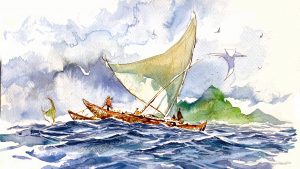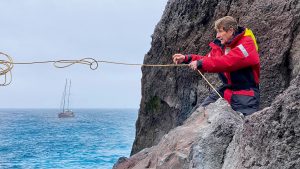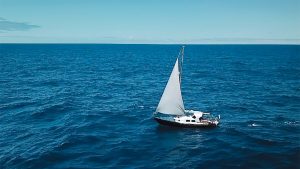When we tell people we’re bluewater cruising around the world, the first question is almost…
Features
Great seamanship: Chasing the Dawn
The title of Nick Moloney’s remarkable book about breaking the Jules Verne unlimited round the…
10 women doing great things in competitive sailing right now
With a Women’s America’s Cup due to start in 2024, a gender balanced sailing event…
Great seamanship: Fifty South to Fifty South
The German pilot schooner Elbe 5, built in 1883, has had a remarkable life. A…
Don McIntyre the adventurer who launched retro-round the world racing
Don McIntyre is on relaxed form when he calls from Les Sables d’Olonne. His current…
James Wharram: life and legacy of the iconic designer
Falmouth, Cornwall, 1955: a legend is born along Customs House Quay. A smartly dressed young…
What’s it like to sail to the most remote of the South Sandwich Islands?
We dropped anchor in 12m of water, a long stone’s throw from an unfriendly rocky…
Gallery: Eleonora – an owner’s story
This article on owning the remarkable 162ft schooner Eleonara is from the archives. It started…
Columbia: a completely reinvented stunning classic yacht
What particularly strikes you as you step on board Columbia is the atmosphere. Judging from…
J Class: the enduring appeal of the world’s most majestic yachts
One of the most awe-inspiring sights in modern yachting is the Spirit of Tradition fleet…
Great seamanship: inside a volcanic caldera in 50-knot winds
Joe Phelan is one of Ireland’s great sailors. With his wife and equal partner Trish…
The land of four kings: discovering Indonesia by yacht
The night is almost over when we motor our dinghy across Namatote Strait, drawn by…
Great seamanship: The Lugworm Chronicles
For anyone interested in small-boat voyaging – or indeed, any sailor wanting to get seriously…
Great seamanship: The Voyage of the Aegre
Back in July 1973, Nicholas Grainger and his wife, Julie, sailed from north-west Scotland bound…
Best sailing films on Netflix, Prime and more
Recent years have seen a proliferation of sailing films arriving on streaming platforms, with Netflix…
Round the Island Race 2023: How to prepare for victory
The exact nature of the error that led someone to share the wisdom of the…
15,000 miles around Europe’s far north in a windsurfer camping under a sail – a fascinating tale
Most of my deepwater sailing I’ve done in conventional yachts or classics. Board sailing and…
Adrift in the Pacific: One sailor’s incredible story of survival
Staring down from the cockpit into the cabin of my vintage sloop I tried to…
The new wingsail concept that could revolutionise shipping
The words ‘muscles’ and ‘sails’ are often included in the same sentence, such is the…
Jessica Watson: the true story of True Spirit star’s voyage
In the late Noughties and early 2010s, sailing garnered astonishing levels of attention due to…























